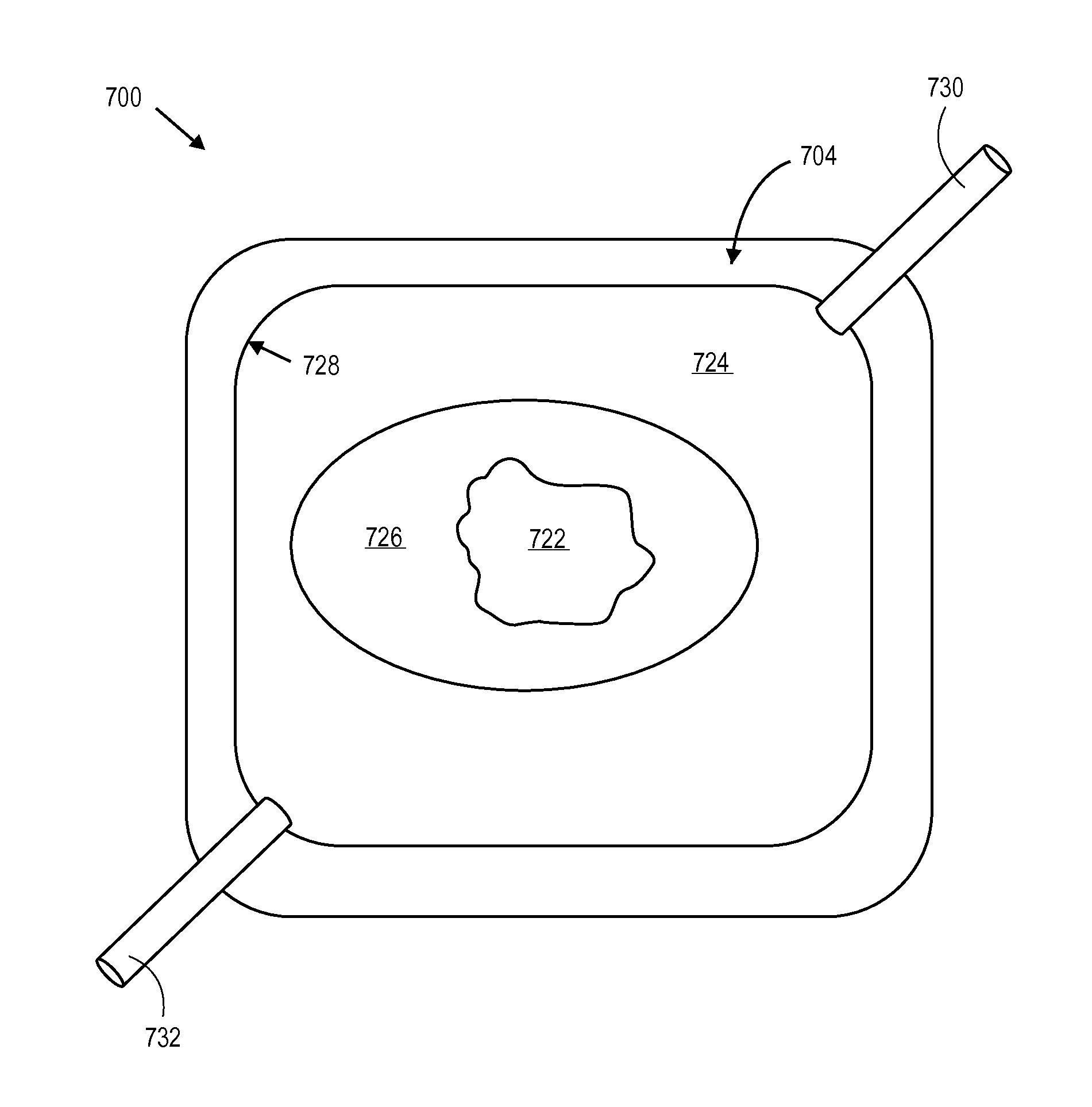Electrokinetic pump based wound treatment system and methods
a technology of electrokinetic pump and wound treatment system, which is applied in the field of closed wound treatment system systems and methods, can solve the problems of degrading the periwound skin, and affecting the healing effect of the wound,
- Summary
- Abstract
- Description
- Claims
- Application Information
AI Technical Summary
Benefits of technology
Problems solved by technology
Method used
Image
Examples
Embodiment Construction
[0077]Non-contact dressing or patch embodiments described herein have pre-formed shapes and sizes and are designed with enhanced deformability, thereby providing an ability to control exposure of the periwound skin to exudate. Additionally, the enhanced deformability and variable adhesion layer capabilities of the patch embodiments described herein enable application of the patches to small surface wounds or wound areas with complex topology, such as the ankle or foot. In addition, non-contact wound treatment systems described herein manage and control the periwound region environment including providing a wide range of positive and negative pressures. As a result, the formation of pressure rings around the wound may be reduced, thereby reduced ischemia in the wound and surrounding tissue. Importantly, the patch and system controls described herein provide a variety of mechanisms to stimulate the flow of exudate and / or sequester exudate away from the wound in therapeutically relevan...
PUM
 Login to View More
Login to View More Abstract
Description
Claims
Application Information
 Login to View More
Login to View More - R&D
- Intellectual Property
- Life Sciences
- Materials
- Tech Scout
- Unparalleled Data Quality
- Higher Quality Content
- 60% Fewer Hallucinations
Browse by: Latest US Patents, China's latest patents, Technical Efficacy Thesaurus, Application Domain, Technology Topic, Popular Technical Reports.
© 2025 PatSnap. All rights reserved.Legal|Privacy policy|Modern Slavery Act Transparency Statement|Sitemap|About US| Contact US: help@patsnap.com



